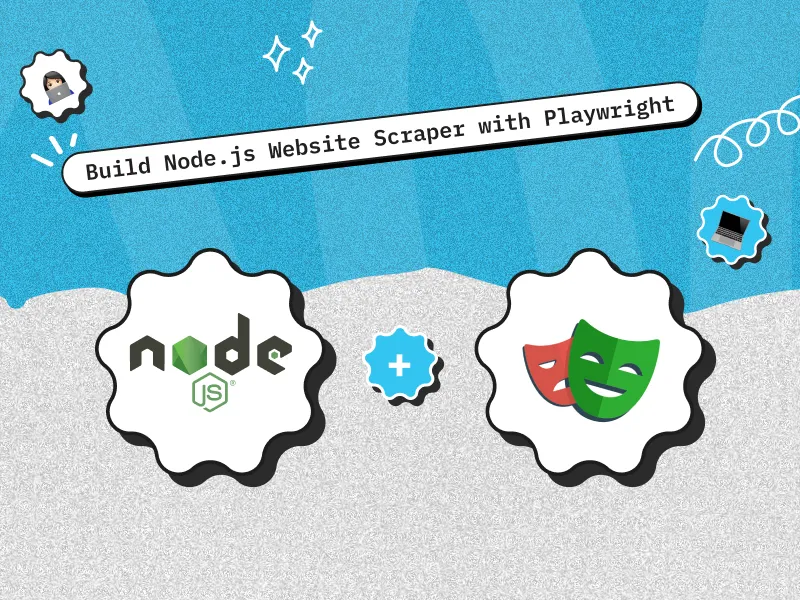Quick Summary
NodeJS is a powerful JavaScript runtime that enables developers to build scalable and high-performance applications. This article explores NodeJS architecture, its core components, execution flow, event-driven approach, patterns, and best practices for scalability.
Introduction
NodeJS has gained immense popularity in modern web development due to its non-blocking, event-driven architecture. It is widely used for building real-time applications, APIs, and microservices. Understanding its architecture helps developers optimize performance and scalability.
What is NodeJS?
NodeJS is an open-source, cross-platform JavaScript runtime built on Google’s V8 engine. It allows developers to use JavaScript for server-side programming, eliminating the need for different languages on the front end and back end. Businesses looking to build fast and scalable web applications often hire NodeJS developers to efficiently develop and maintain their projects. NodeJS is widely used for:
- Building scalable web applications
- Real-time applications like chat and streaming services
- RESTful APIs and microservices
- IoT applications
What is NodeJS Architecture?
NodeJS follows a single-threaded, event-driven architecture designed to handle multiple connections simultaneously with high efficiency. This architecture makes NodeJS highly scalable, especially for I/O-heavy applications like APIs, real-time chats, and streaming services.
Quick Comparison: NextJS vs NodeJS: 5 Key Scenarios to Pick the Right Framework
Core Components of NodeJS Architecture
NodeJS is a runtime environment that allows JavaScript to be executed outside the browser. It is built on a robust architecture that enables high-performance, scalable, and asynchronous applications. The core components of NodeJS architecture include:
1. V8 JavaScript Engine
NodeJS is powered by Google’s V8 engine, which compiles JavaScript code into machine code, making execution faster. This engine enables NodeJS to handle complex operations efficiently.
2. Single-Threaded Event Loop
Unlike traditional multi-threaded architectures, NodeJS operates on a single-threaded event loop that handles multiple client requests asynchronously. This non-blocking architecture is key to its efficiency.
3. Libuv Library
NodeJS uses the libuv library to manage asynchronous I/O operations, including file system access, networking, and timers. It provides the event-driven, non-blocking behavior essential for high concurrency.
4. Event-Driven Architecture
NodeJS follows an event-driven programming model, where events are emitted and handled asynchronously. The EventEmitter module facilitates communication between different parts of the application.
5. Non-Blocking I/O
NodeJS allows I/O operations (such as file reading/writing and database interactions) to be executed asynchronously without blocking the execution of other tasks. This enhances application responsiveness.
6. NodeJS APIs and Modules
NodeJS provides built-in APIs for handling file systems, HTTP requests, streams, and more. Additionally, the Node Package Manager (NPM) offers a vast collection of third-party modules to extend functionality.
7. Request-Response Handling
NodeJS efficiently manages HTTP requests and responses using frameworks like Express.js. It processes multiple incoming requests concurrently, making it ideal for web applications and APIs.
8. Thread Pool (Worker Threads)
While NodeJS is single-threaded, it utilizes a worker thread pool (via libuv) for CPU-intensive tasks like cryptographic hashing or data compression, improving performance in computational tasks.
Quick Look: Node JS vs JavaScript
How NodeJS Works: Step-by-Step Execution Flow
NodeJS operates on a single-threaded, event-driven architecture, making it highly efficient for handling concurrent requests. Below is a step-by-step breakdown of how NodeJS executes code and manages operations:
Step 1. Initializing the Application
The NodeJS runtime is launched when a script is executed using the node command.
The V8 JavaScript engine compiles and executes the JavaScript code.
Step 2. Event Loop Starts
NodeJS uses an event loop to handle asynchronous operations.
It continuously listens for incoming events and tasks.
Step 3. Processing Input (I/O) Requests
When an asynchronous task (such as reading a file, database query, or HTTP request) is encountered, NodeJS delegates it to worker threads (via the libuv library) instead of blocking the main thread.
Step 4. Using the Callback Queue & Event Loop
Once an asynchronous task is completed, its callback function is placed in the callback queue.
The event loop checks the queue and pushes the completed task back into the execution stack.
Step 5. Execution of Callbacks & Promises
If the call stack is empty, the event loop picks the next task from the callback queue.
Promises and async/await tasks are handled in the microtask queue, which has higher priority than the callback queue.
Step 6. Handling Multiple Requests Efficiently
Since NodeJS is non-blocking, it can handle multiple I/O-bound requests simultaneously.
It does not create a new thread for each request like traditional server models (e.g., PHP with Apache).
Step 7. Completing Execution & Closing the Event Loop
When there are no pending operations or callbacks, the event loop shuts down, and NodeJS exits the process.
Quick Look: Build a Web Scraper with NodeJS – Step-by-Step Guide
Node JS Architecture Patterns
NodeJS is known for its asynchronous, event-driven architecture, making it ideal for scalable and high-performance applications. Several architecture patterns can be used to structure a NodeJS application efficiently, depending on the project’s requirements.
Below are some of the most commonly used NodeJS architecture patterns:
1. Layered Architecture (N-Tier Architecture)
The layered architecture organizes the application into separate layers based on functionality, making the system modular and easy to maintain.
Common Layers:
Presentation Layer – Handles user interfaces and client requests (e.g., REST API endpoints).
Business Logic Layer – Contains core application logic and processing.
Data Access Layer – Manages database interactions.
Service Layer (Optional) – Acts as an intermediary for external API calls or shared services.
Best for: Enterprise applications, scalable web apps.
2. Microservices Architecture
Microservices break down an application into small, independent services that communicate via APIs. Each service can run, scale, and be updated independently.
Key Features:
Decoupled Services – Each microservice performs a specific task (e.g., authentication, payment processing).
Scalability – Services can be scaled individually based on demand.
Tech Agnostic – Different services can use different technologies.
Best for: Large-scale applications, SaaS platforms, and cloud-based systems.
3. Event-Driven Architecture
NodeJS natively supports event-driven programming through its EventEmitter module. This pattern is useful when the application needs to handle real-time data updates.
How It Works:
- Components communicate via events instead of direct calls.
- When an event is triggered, multiple subscribers (event listeners) react accordingly.
- Example: A chat application where users receive messages in real-time when an event (message sent) occurs.
Best for: Real-time applications (chat apps, live notifications, gaming apps).
4. Model-View-Controller (MVC) Architecture
The MVC pattern separates concerns in web applications by organizing the code into three distinct components:
Model (M) – Manages data logic and interacts with the database.
View (V) – Handles user interface and presentation logic.
Controller (C) – Processes input, updates the model, and renders views.
Example – Express.js with EJS (Embedded JavaScript) or Handlebars for templating.
Best for: Web applications following structured UI logic.
5. Serverless Architecture
In serverless architecture, applications run on cloud platforms like AWS Lambda, Azure Functions, or Google Cloud Functions, which automatically manage scaling and infrastructure.
Key Benefits:
- No need for server management.
- Pay-as-you-go pricing model.
- Ideal for event-driven applications like chatbots or scheduled tasks.
Best for: Lightweight applications, background jobs, IoT applications.
6. Monolithic Architecture
The monolithic approach consists of a single, unified codebase where all components (frontend, backend, and database) are tightly coupled.
Pros:
- Easier to develop and deploy for small projects.
- Simple debugging and testing.
Cons:
- Becomes difficult to scale as the application grows.
- Harder to maintain and update over time.
Best for: Small-to-medium applications with limited complexity
Quick Comparison: React vs Node JS
Best Practices for Scalable Node JS Architecture
Scalability is crucial when building web applications with NodeJS, ensuring that your app can handle increased traffic, users, and data efficiently. Below are some best practices for designing a scalable NodeJS architecture:
1. Use a Modular and Layered Architecture:
- Break down your application into small, reusable modules (controllers, services, data access layers).
- Follow the separation of concerns principle for maintainability and scalability.
2. Leverage Asynchronous and Non-Blocking Code:
- Use async/await and Promises to handle I/O operations efficiently.
- Avoid blocking operations that slow down the event loop.
3. Implement Load Balancing and Clustering:
- Use NodeJS Clustering or PM2 to run multiple instances on different CPU cores.
- Deploy a load balancer (NGINX, AWS ELB) to distribute requests evenly.
4. Optimize Database Performance:
- Use connection pooling for efficient database connections.
- Implement caching (Redis, Memcached) to reduce database load.
- Optimize queries with proper indexing and sharding.
5. Containerization and Orchestration:
- Use Docker to containerize the application for consistency.
- Deploy on Kubernetes for automated scaling and orchestration.
6. Implement Caching for Faster Responses:
- Store frequently accessed data in Redis or Memcached.
- Use CDNs to serve static assets efficiently.
7. Secure the Application:
- Store sensitive data in environment variables.
- Use JWT or OAuth for authentication.
- Enable rate limiting to prevent API abuse.
Conclusion
NodeJS architecture provides a robust foundation for building high-performance, scalable applications. By understanding its components, patterns, and best practices, developers can create efficient and optimized solutions tailored to modern web development needs. To ensure seamless development and implementation, businesses should hire NodeJS developers who have the expertise to build scalable and efficient applications that meet industry standards.
FAQs on Node JS Architecture
1. What is the architecture of NodeJS database?
Ans: NodeJS follows an asynchronous, event-driven architecture for database interactions. It typically connects to databases like MongoDB (NoSQL) or MySQL/PostgreSQL (SQL) using ORMs (Sequelize, TypeORM) or native drivers. The architecture emphasizes non-blocking I/O, enabling efficient handling of multiple database requests without slowing down performance.
2. Is NodeJS a MVC framework?
Ans: No, NodeJS is not an MVC framework; it is a runtime environment for executing JavaScript on the server. However, frameworks built on NodeJS, like Express.js, NestJS, and AdonisJS, follow the MVC (Model-View-Controller) architecture, helping developers structure applications in a modular way.
3. What are the different components of the NodeJS architecture?
Ans: NodeJS architecture includes the V8 Engine for fast JavaScript execution, the Event Loop for handling asynchronous tasks, Libuv for managing non-blocking I/O, and APIs & Modules for extended functionality. This design ensures high scalability and efficiency for real-time applications.











 30 mins free Consulting
30 mins free Consulting 
 5 min read
5 min read 







 Love we get from the world
Love we get from the world 